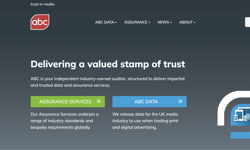Things have taken a turn since I wrote last time about the disappointing performance of magazine apps. I’m referring, of course, to Apple’s announcement that it will launch the Flipboard-like News for iOS 9 app this fall, replacing the app Newsstand.
Few seem crushed by Newsstand’s demise, thanks to problems that included "hiding" digital issues in a folder and lack of data sharing and maintenance by Apple.
Even 29th Street, which provides an iOS publishing platform for Newsstand apps, wrote that it’s glad that Apple is killing Newsstand: “Apps for publications like magazines and newspapers should never have been buried in a weird little corner of their own anyway… and one of the biggest constraints on their growth and adoption has been the fact that they’re not just regular apps that can be promoted and discovered right in the App Store like everything else.” The latter scenario is exactly what will happen once News is formally launched.
Since News offers only free content, and doesn’t enable app subs or in-app purchases (News publishers will get 100% of the revenue on ads that they sell, and 70% on ads sold through Apple’s iAd platform), it would seems that most publishers will need to continue to maintain apps in the Apple store and perhaps other digital newsstands.
Talking New Media’s DB Hebbard, while fed up with the Newsstand’s frustrations, said he still thinks it wasn’t a total failure. “If the Newsstand in digital form is a bad idea, then so is every other digital newsstand,” he wrote. “Publishers who include their digital editions inside Next Issue or Zinio or Magzter still will have their publications stuck inside another app. What made the Newsstand great, if you listen to the sales pitches of many digital publishing platforms, is that anyone could create their own digital publications. While it is true that anyone will be able to contribute their content to the News app, it will be more like a blogging environment than a place where an editor can piece together an entire branded product. And that, in the end, is the big issue here: Is there a future for the magazine and newspaper in digital form? Or will readers only be interested in reading stories one at a time, branded by the company that provides the wrapper?”
As he noted, however, many believe that News, Flipboard and similar apps from Facebook and Snapchat that publish media content directly are a natural step toward magazine content becoming truly omnichannel. “The end of Newsstand marks the beginning of the era in which mobile is just another distribution platform for publishers,” wrote 29th Street. “Mobile’s dominance of the publishing space becomes less of a talking point and more of an accepted reality. The most important thing for app publishers to do is experiment, gather results and feedback from their readers and find new avenues. This is why the web, print and apps are good complements to one another, and why additional channels, such as Apple News and Facebook Instant Articles, are valuable as well.”
Publishers enthusiastic
Publishers certainly seem enthusiastic about News: several dozen are participating as partners at launch, including the New York Times (offering 30 articles free each month), Condé Nast, Time Inc, the Economist and even the Financial Times, which famously dropped its iOS app four years ago, successfully moving to a responsive website.
The News app’s optional template enables video, rich typography, animation and image galleries, reported Macworld. News “offers an environment that combines the rich, immersive design of our photography, artwork and editorial expertise with the interactivity and dynamism of digital media – it’s stunning,” raved Condé Nast president Bob Sauerberg, in a press release about the app.
But will News prove monetisable? Based on early comments, publishers view its potential for selling more apps to be as important as advertising revenue prospects. In fact, according to web-reader developer PugPig, far from using News to supplant dedicated publisher apps, Apple is pushing News as “a discovery mechanism for publishers to drive readers to their own branded apps… The trick will be to get the balance right so that publishers have enough content in Apple News to be noticed while keeping enough back in their own branded apps to ensure people want to engage directly with them.”
“We see this new app as an extension of our existing sampling strategy, which involves making a carefully chosen selection of our stories, charts and multimedia available free on social platforms, on our website and in our apps,” confirmed Economist deputy editor Tom Standage, in a release. "The best feature of News is deep linking, which may promise to drive some traffic to the publisher’s app, assuming publishers stay committed to their digital editions” following Newsstand’s failure – in part because Apple let it fall into chaos in recent years, observed Hebbard.
News will also allow users to customise the content they receive, and it will employ predictive algorithms, per Macworld. This will presumably help publishers identify and woo likely new app buyers and attract advertisers (although at this writing, I’ve yet to see any statements as to how much of News’s user data publishers will have access to).
It’s hard to see a downside to people reading articles from wide-ranging, superb-quality news publications like the Economist and the Financial Times. Still, am I being a wet blanket by wondering if a lot of people using these types of apps and feeds are going to end up reading more and more of the same types of content, possibly limiting their exposure to opposing viewpoints and articles on unfamiliar topics that might broaden their minds?












